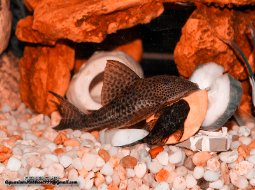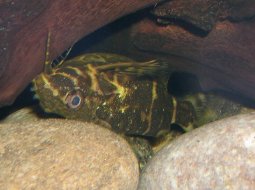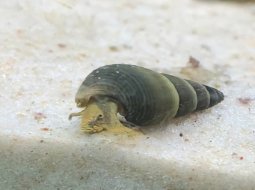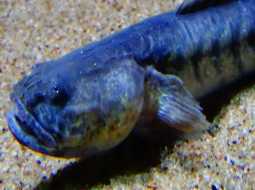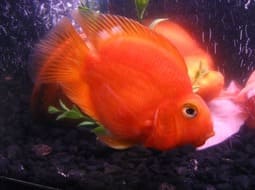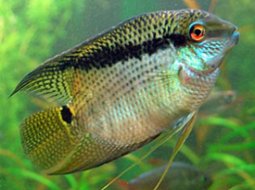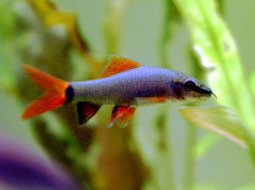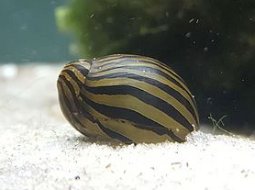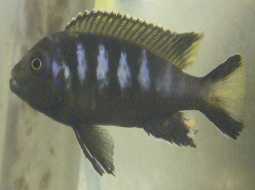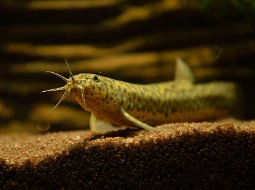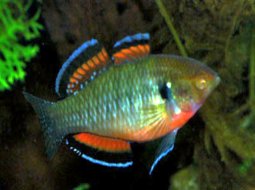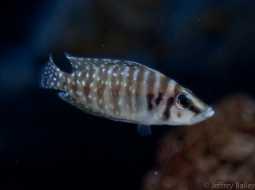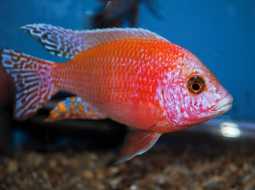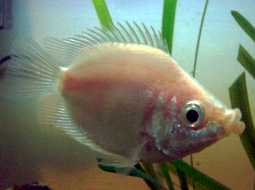
Loading Aqualapp ...
Care and Compatibility of Frontosa Cichlid - Cyphotilapia frontosa
Introduction
Cyphotilapia frontosa is known for its robust body and prominent head, giving it a majestic appearance. These fish are highly prized in the aquarium hobby due to their attractiveness and uniqueness. Their coloration may vary, but they typically have a dark blue or black body with vertical white or silvery stripes.
Behavior
Frontosas are generally peaceful and calm fish, but they can become territorially aggressive during breeding or when they feel threatened. They are slow swimmers and often spend most of their time near the bottom of the aquarium. They are known for their social behavior and the formation of hierarchies within the group.
Sexual Dimorphism
Sexual dimorphism in Cyphotilapia frontosa is evident. Males are typically larger and have a more pronounced hump on the forehead than females. Additionally, males may develop more intense coloration and a larger hump as they mature.
Reproduction
Breeding Cyphotilapia frontosa in captivity can be challenging due to their specific requirements and territorial behavior during spawning. To encourage breeding, it is important to provide them with a suitable environment with hiding places and spawning areas. The female deposits the eggs on a flat surface, and the male fertilizes them. Both parents care for and protect the eggs and fry.
Aquarium Conditions
Cyphotilapia frontosa is a majestic and striking African cichlid that requires a spacious aquarium with rocky décor resembling its natural habitat. They prefer clean, well-oxygenated water, so efficient filtration is essential. Providing them with ample space and shelters to avoid stress is important.
Feeding
In their natural habitat, Cyphotilapia frontosa primarily feed on aquatic invertebrates and small fish. In the aquarium, they can be fed a varied diet that includes high-quality commercial foods in the form of pellets or flakes, as well as live or frozen foods such as brine shrimp, daphnia, and mosquito larvae.
Complexity
Caring for Cyphotilapia frontosa can be challenging due to their specific needs and potentially large size. They are territorial fish that can be aggressive towards other fish, so it's important to select appropriate tank mates. They require a varied diet and good water quality.
In case you need more help, or if you want to know into any topic related to the Cyphotilapia frontosa (Frontosa Cichlid) and even any other species you can use the forums to ask what you need.
To do an analysis more detailed about coexistence and behavior of Cyphotilapia frontosa (Frontosa Cichlid) use the Aquarium simulation tool, if you do this you can test different ways to combine the Frontosa Cichlid with other fishes giving the dimensions and space on you aquarium, on this way you can known the optimal configuration for keep the fishes that you want.
You can also find out the 21 species compatible with the Cyphotilapia frontosa (Frontosa Cichlid) can live together.
Note: The parameters of the water such as PH and temperature are also used to calculate the compatibility of the species.
Compatible species (21)
Compatible (2 Species)
Compatible without any restriction
Similar Sizes (1 Species)
They can coexist if they are the same size or very similar sizes, it does not work in all cases, there may be exceptions.
With Reservation (5 Species)
Compatible in some cases, it depends on the nature and personality of the fish.
Showdown over territory (3 Species)
Fish can live together as long as the space is spacious enough to delimit a territory, otherwise there may be aggressions for competing for the territory.
Necesitan al menos 2 ó 3 hembras por macho, pueden ser territoriales entre ellos mismos.
Considerable size difference (3 Species)
They can coexist while they are similar in size or the size difference is not very abysmal, since as the fish grows it increases the chances of eating its partner that did not grow much.
Compatible if space is enough (7 Species)
They can coexist together if the aquarium they share is large and spacious enough for both species to feel good, as some fish may attack others to feel that they have little space and try to eliminate the competition.
Frontosa Cichlid
Cyphotilapia frontosa
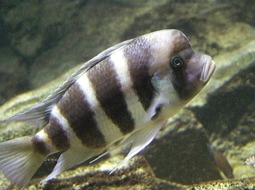
- Ph: 8 - 9
- Temperature (c°): 24 - 27
- Measures: 30 cm
- Aquarium Capacity:
150 Liters - 40 Gallons - Alimentación: Carnivores, Omnivores
- Colores: Black, Blue, Gris
- Comportamiento: Active, Semi Aggressive, Shoal, Territorial
- Habitad: African
- Preferencias del Acuario: Rocks
- Tamaño: Big
- Taxonomía: Cichlids, Fish
- Tipo de Agua: Sweet water, Tropical waters
- Velocidad de nado o movimiento: Normal
- Zona de Nado: Aquarium background

